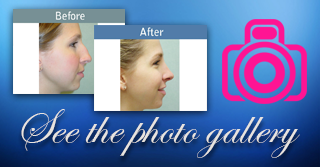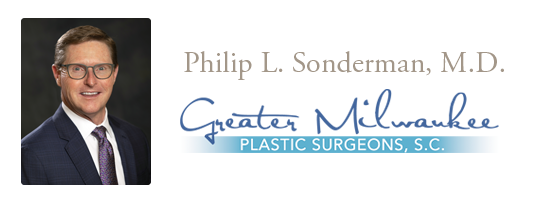 Rhinoplasty, or surgery to reshape the nose, is one of the most common of all plastic surgery procedures. Rhinoplasty can reduce or increase the size of your nose, change the shape of the tip or the bridge, narrow the span of the nostrils, or change the angle between your nose and your upper lip. It may also correct a birth defect or injury, or help relieve some breathing problems.
Rhinoplasty, or surgery to reshape the nose, is one of the most common of all plastic surgery procedures. Rhinoplasty can reduce or increase the size of your nose, change the shape of the tip or the bridge, narrow the span of the nostrils, or change the angle between your nose and your upper lip. It may also correct a birth defect or injury, or help relieve some breathing problems.
If you’re considering rhinoplasty, this information will give you a basic understanding of the procedure-when it can help, how it’s performed, and what results you can expect. It can’t answer all of your questions, since a lot depends on the individual patient and the surgeon. Please ask Dr. Sonderman about anything you don’t understand.
The Best Candidates for Rhinoplasty
Rhinoplasty can enhance your appearance and your self-confidence, but it won’t necessarily change your looks to match your ideal, or cause other people to treat you differently. Before you decide to have surgery, think carefully about your expectations and discuss them with Dr. Sonderman.
The best candidates for rhinoplasty are people who are looking for improvement, not perfection, in the way they look. If you’re physically healthy, psychologically stable, and realistic in your expectations, you may be a good candidate.
Rhinoplasty can be performed to meet aesthetic goals or for reconstructive purposes-to correct birth defects or breathing problems.
Age may also be a consideration. Many surgeons prefer not to operate on teenagers until after they’ve completed their growth spurt-around 14 or 15 for girls, a bit later for boys. It’s important to consider teenagers’ social and emotional adjustment, too, and to make sure it’s what they, and not their parents, really want.
All Surgery Carries Some Uncertainty and Risk
When rhinoplasty is performed by a qualified plastic surgeon, complications are infrequent and usually minor. Nevertheless, there is always a possibility of complications, including infection, nosebleed, or a reaction to the anesthesia. You can reduce your risks by closely following Dr. Sonderman’s instructions both before and after surgery.
After surgery, small burst blood vessels may appear as tiny red spots on the skin’s surface; these are usually minor but may be permanent. As for scarring, when rhinoplasty is performed from inside the nose, there is no visible scarring at all; when an “open” technique is used, or when the procedure calls for the narrowing of flared nostrils, the small scars on the base of the nose are usually not visible.
In about one case out of ten, a second procedure may be required-for example, to correct a minor deformity. Such cases are unpredictable and happen even to patients of the most skilled surgeons. The corrective surgery is usually minor.
Planning Your Surgery
Good communication between you and your physician is essential. In your initial consultation, the surgeon will ask what you’d like your nose to look like, evaluate the structure of your nose and face, and discuss the possibilities with you. He or she will also explain the factors that can influence the procedure and the results. These factors include the structure of your nasal bones and cartilage, the shape of your face, the thickness of your skin, your age, and your expectations.
Dr. Sonderman will also explain the techniques and anesthesia he or she will use, the type of facility where the surgery will be performed, the risks and costs involved, and any options you may have. Most insurance policies don’t cover purely cosmetic surgery; however, if the procedure is performed for reconstructive purposes, to correct a breathing problem or a marked deformity, the procedure may be covered. Check with your insurer, and obtain pre-authorization for your surgery.
Be sure to tell Dr. Sonderman if you’ve had any previous nose surgery or an injury to your nose, even if it was many years ago. You should also inform your surgeon if you have any allergies or breathing difficulties; if you’re taking any medications, vitamins, or recreational drugs; and if you smoke.
Don’t hesitate to ask your doctor any questions you may have, especially those regarding your expectations and concerns about the results.
Preparing for Your Surgery
Dr. Sonderman will give you specific instructions on how to prepare for surgery, including guidelines on eating and drinking, smoking, taking or avoiding certain vitamins and medications, and washing your face. Carefully following these instructions will help your surgery go more smoothly.
While you’re making preparations, be sure to arrange for someone to drive you home after your surgery and to help you out for a few days if needed.
Where Your Surgery Will be Perfomed
Rhinoplasty may be performed in a surgeon’s office-based facility, an outpatient surgery center, or a hospital. It’s usually done on an outpatient basis, for cost containment and convenience. Complex procedures may require a short inpatient stay.
Types of Anesthesia
Rhinoplasty can be performed under local or general anesthesia, depending on the extent of the procedure and on what you and Dr. Sonderman prefer.
With local anesthesia, you’ll usually be lightly sedated, and your nose and the surrounding area will be numbed; you’ll be awake during the surgery, but relaxed and insensitive to pain. With general anesthesia, you’ll sleep through the operation.
The Surgery
Rhinoplasty usually takes an hour or two, though complicated procedures may take longer. During surgery the skin of the nose is separated from its supporting framework of bone and cartilage, which is then sculpted to the desired shape. The nature of the sculpting will depend on your problem and your surgeon’s preferred technique. Finally, the skin is redraped over the new framework.
Many plastic surgeons perform rhinoplasty from within the nose, making their incision inside the nostrils. Others prefer an “open” procedure, especially in more complicated cases; they make a small incision across the columella, the vertical strip of tissue separating the nostrils.
When the surgery is complete, a splint will be applied to help your nose maintain its new shape. Nasal packs or soft plastic splints also may be placed in your nostrils to stabilize the septum, the dividing wall between the air passages.
After Your Surgery
After surgery-particularly during the first twenty-four hours-your face will feel puffy, your nose may ache, and you may have a dull headache. You can control any discomfort with the pain medication prescribed by Dr. Sonderman. Plan on staying in bed with your head elevated (except for going to the bathroom) for the first day.
You’ll notice that the swelling and bruising around your eyes will increase at first, reaching a peak after two or three days. Applying cold compresses will reduce this swelling and make you feel a bit better. In any case, you’ll feel a lot better than you look. Most of the swelling and bruising should disappear within two weeks or so. (Some subtle swelling-unnoticeable to anyone but you and Dr. Sonderman-will remain for several months.)
A little bleeding is common during the first few days following surgery, and you may continue to feel some stuffiness for several weeks. Dr. Sonderman will probably ask you not to blow your nose for a week or so, while the tissues heal.
If you have nasal packing, it will be removed after a few days and you’ll feel much more comfortable. By the end of one or, occasionally, two weeks, all dressings, splints, and stitches should be removed.
Getting Back to Normal
Most rhinoplasty patients are up and about within two days, and able to return to school or sedentary work a week or so following surgery. It will be several weeks, however, before you’re entirely up to speed.
Dr. Sonderman will give you more specific guidelines for gradually resuming your normal activities. They’re likely to include these suggestions: Avoid strenuous activity (jogging, swimming, bending, sexual relations-any activity that increases your blood pressure) for two to three weeks. Avoid hitting or rubbing your nose, or getting it sunburned, for eight weeks. Be gentle when washing your face and hair or using cosmetics.
You can wear contact lenses as soon as you feel like it, but glasses are another story. Once the splint is off, they’ll have to be taped to your forehead or propped on your cheeks for another six to seven weeks, until your nose is completely healed.
Dr. Sonderman will schedule frequent follow-up visits in the months after surgery, to check on the progress of your healing. If you have any unusual symptoms between visits, or any questions about what you can and can’t do, don’t hesitate to call your doctor.
Your New Look
In the days following surgery, when your face is bruised and swollen, it’s easy to forget that you will be looking better. In fact, many patients feel depressed for a while after plastic surgery—it’s quite normal and understandable.
Rest assured that this stage will pass. Day by day, your nose will begin to look better and your spirits will improve. Within a week or two, you’ll no longer look as if you’ve just had surgery.
Still, healing is a slow and gradual process. Some subtle swelling may be present for months, especially in the tip. The final results of rhinoplasty may not be apparent for a year or more.
In the meantime, you might experience some unexpected reactions from family and friends. They may say they don’t see a major difference in your nose. Or they may act resentful, especially if you’ve changed something they view as a family or ethnic trait. If that happens, try to keep in mind why you decided to have this surgery in the first place. If you’ve met your goals, then your surgery is a success.
Note: Rhinoplasty or nose surgery is sometimes referred to as a “nose job.”







